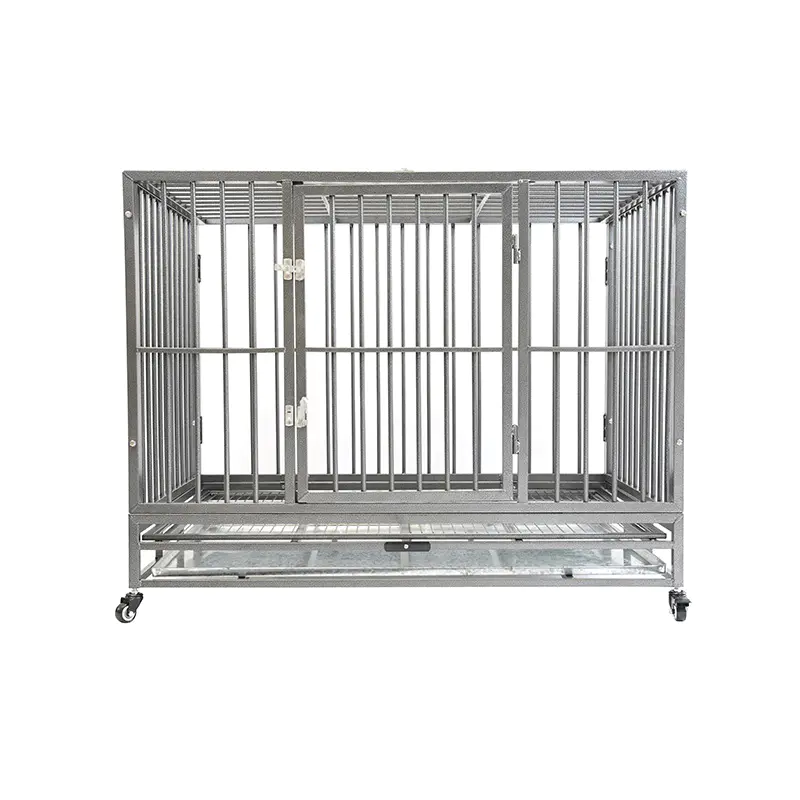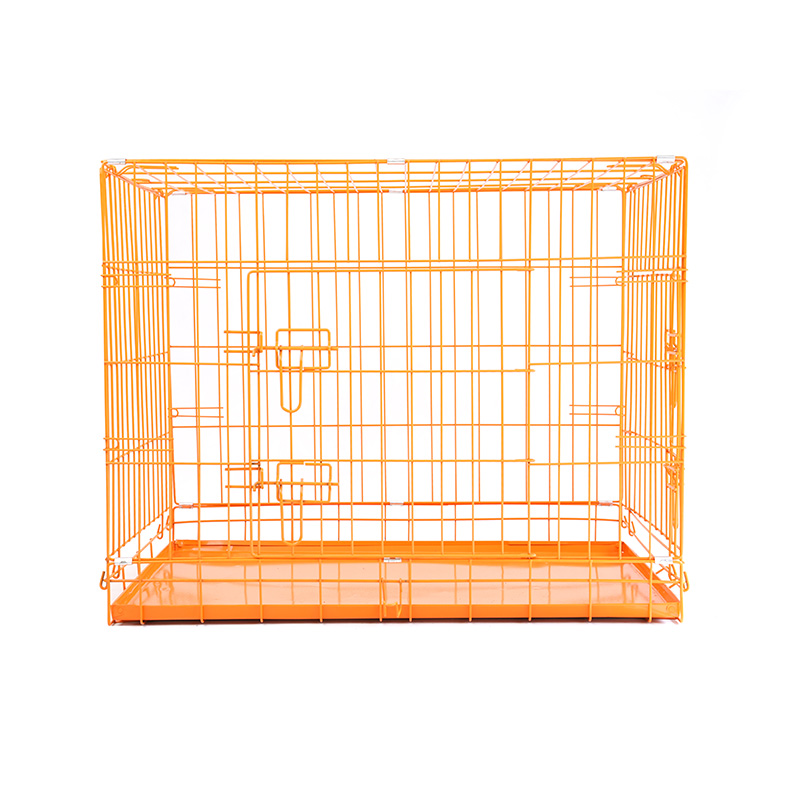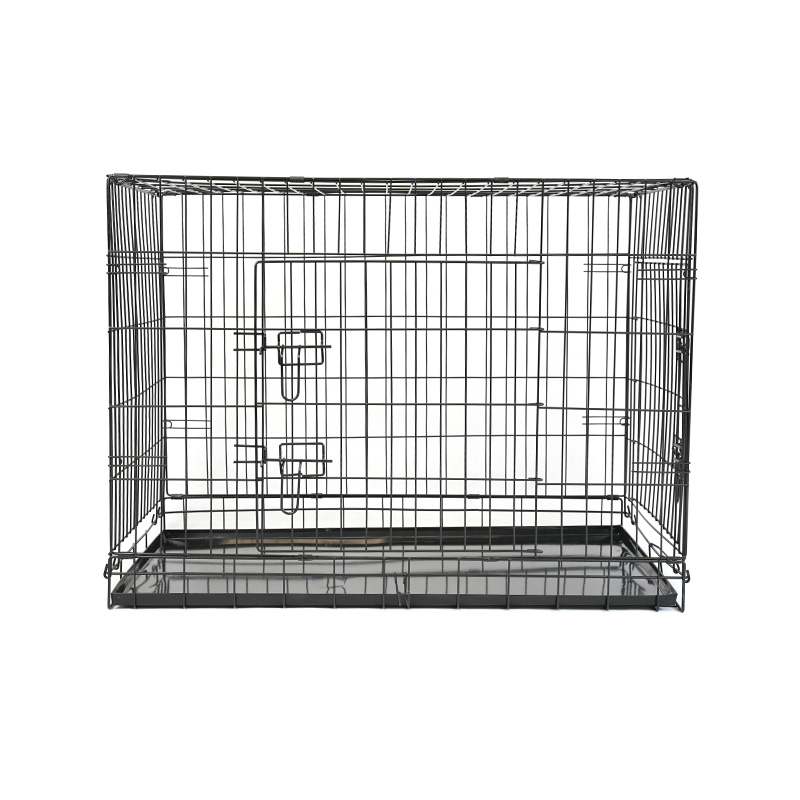- Type:
- Industry News
- Date
- 2024-Aug-08
How to fix and place a heavy duty dog cage during travel or outdoor activities?
1. Choose a suitable location
You need to choose a flat, stable and safe place to place the heavy duty dog cage. Outdoors, avoid slopes, potholes or places where water easily accumulates to prevent the cage from tilting or collapsing due to uneven ground. At the same time, make sure that the selected location is away from major traffic routes, crowded areas and noise sources that may cause panic in dogs.
2. Prepare necessary tools and materials
Before fixing and placing the heavy duty dog cage, you need to prepare some necessary tools and materials, including but not limited to:
Ground nails or anchors: used to fix the cage to the ground to prevent it from being blown by the wind or moved by humans.
Ropes or straps: used to connect the cage to fixed points (such as trees, railings, etc.) to increase stability.
Heavy objects (such as stones, sandbags): If ground nails or anchors cannot be used, heavy objects can be pressed around the cage to increase its stability.
Level: Check whether the cage is placed horizontally to ensure that the dog can stand and lie comfortably in the cage.
Gloves and safety shoes: protect yourself from injury during operation.
3. Actual fixing and placement steps
Clean and check the ground: remove debris and sharp objects on the ground, and make sure the ground is flat and free of potholes. At the same time, check whether the ground is strong enough to support the weight of the heavy duty dog cage.
Place the cage: Gently place the heavy duty dog cage on the selected location and use a level ruler to check whether it is placed horizontally. If it is not level, you need to adjust the position of the cage or use pads and other items to level it.
Fix the cage:
Use ground nails or anchors: If the ground conditions permit, you can drive ground nails or anchors into the ground around the cage, and then connect the cage to the ground nails with ropes or straps. Note that the ropes or straps should be tightened and tied firmly to prevent loosening.
Use natural fixing points: If there are natural fixing points such as trees and railings nearby, you can pass the ropes or straps around these fixing points and tighten them, and then fix the other end to the cage.
Use heavy objects: If you cannot use ground nails or natural fixing points, you can place heavy objects (such as stones, sandbags) around the cage to increase its stability. Note that the weight should be evenly distributed and heavy enough to resist external forces such as wind.
Check stability: After fixing, gently shake the cage to check whether it is stable. If it is found to be loose or unstable, it needs to be adjusted and reinforced in time.
Set up sunshade and windproof facilities (if necessary): According to weather conditions and travel plans, you can set up facilities such as awnings or windshields around the cage to provide a comfortable resting environment for dogs.
4. Precautions
Be patient and careful throughout the process to ensure that every step is done correctly.
Check the fixing points regularly to see if they are firm and reliable, especially in bad weather or after long-term use.
Considering the comfort and safety of the dog, try to avoid excessive vibration or noise to the cage during the fixing and placement process.
If possible, conduct a simulation test before traveling or outdoor activities to ensure that the fixing and placement plan of the heavy duty dog cage is feasible and safe and reliable.


 Inquiry
Inquiry

 English
English 中文简体
中文简体 Deutsch
Deutsch





